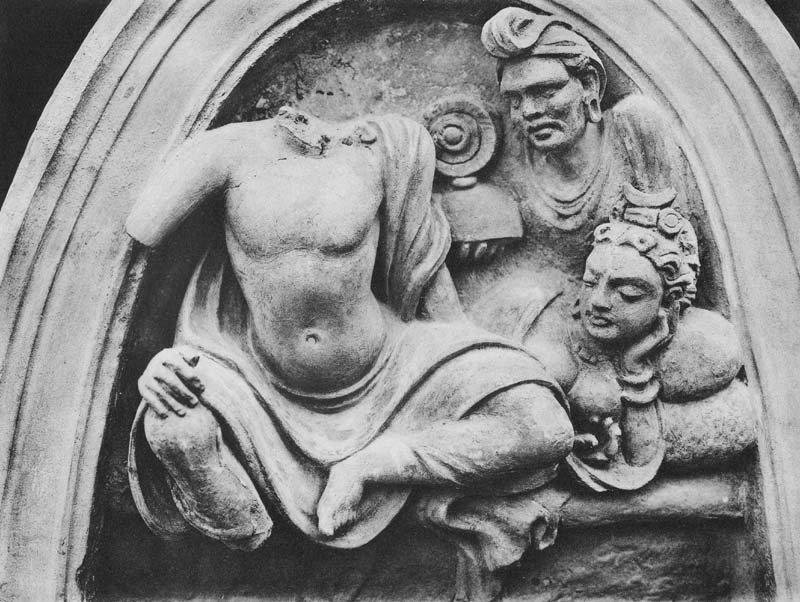The Great Renunciation
Tapa Kalān - Medallion-shaped niche
This medallion-shaped niche represents the Great Renunciation, also known as the Sleeping of the Women, an episode that precedes the Great Departure. The aesthetic is refined, the composition limited to its main actors. Asleep, Yaśodharā/Gopa supports her head with one hand. With her round, opulent breasts, wearing a necklace and bracelets, she is as reminiscent of certain drowsy bacchantes as of certain Indian deities. Her headdress with moon and sun disk underlines an Iranian influence, perhaps Hephtalite. Behind her is the squire Chandaka. He wears a cap of unusual shape, a turban that curls up over the front of his forehead, in the manner of a novice's braid that is exaggerated.
His features are strongly individualised. His sunken eyes and emaciated face give him a tormented pout: he holds out his helmet to Siddhartha. The prince's hairstyle is original. It is neither a turban nor a diadem. It is a helmet, with a circular ornament. J. Hackin explains that this type, probably feathered, is often encountered in Mathūra. Siddhartha is in the lalitasāna position of relaxation. Unfortunately, his head is missing, as well as part of his arm. The body is slender, wiggling. Shirtless, he is wrapped in a paridhāna that rolls up and over his shoulder.
Bibliographical References :BARTHOUX Jules - 1930 - Les Fouilles de Haḍḍa, Figures et Figurines - Pl. 46


